Brealey, Myers. Principles of Corporate Finance. 7th edition
Подождите немного. Документ загружается.


Brealey−Meyers:
Principles of Corporate
Finance, Seventh Edition
VI. Options 21. Valuing Options
© The McGraw−Hill
Companies, 2003
but even so the formula performs remarkably well in the real world, where
stocks trade only intermittently and prices jump from one level to another. The
Black–Scholes model has also proved very flexible; it can be adapted to value
options on a variety of assets with special features, such as foreign currency,
bonds, and commodities. It is not surprising therefore that it has been ex-
tremely influential and has become the standard model for valuing options.
Every day dealers on the options exchanges use this formula to make huge
trades. These dealers are not for the most part trained in the formula’s mathe-
matical derivation; they just use a computer or a specially programmed calcu-
lator to find the value of the option.
Using the Black–Scholes Formula
The Black–Scholes formula may look difficult, but it is very straightforward to ap-
ply. Let us practice using it to value the AOL call.
Here are the data that you need:
• Price of stock .
• Exercise .
• Standard deviation of continuously compounded annual .
• Years to .
• Interest rate per percent (equivalent to 1.98 percent for six
months).
12
Remember that the Black–Scholes formula for the value of a call is
where
normal probability function
There are three steps to using the formula to value the AOL call:
Step 1 Calculate and . This is just a matter of plugging numbers into the for-
mula (noting that “log” means natural log):
d
2
⫽ d
1
⫺ 2t ⫽ .2120 ⫺ 1.4069 ⫻ 2.52 ⫽⫺.0757
⫽ .2120
⫽ log 355/155/1.019824/1.4069 ⫻ 2.52 ⫹ 1.4069 ⫻ 2.52/2
d
1
⫽ log 3P/PV1EX24/2t ⫹ 2t/2
d
2
d
1
N1d2 ⫽ cumulative
d
2
⫽ d
1
⫺ 2t
d
1
⫽ log 3P/PV1EX24/2t ⫹ 2t/2
3N1d
1
2 ⫻ P4 ⫺ 3N1d
2
2 ⫻ PV1EX24
annum ⫽ r
f
⫽ 4
maturity ⫽ t ⫽ .5
returns ⫽ ⫽ .4069
price ⫽ EX ⫽ 55
now ⫽ P ⫽ 55
CHAPTER 21 Valuing Options 603
12
If the annually compounded rate of interest is 4 percent, the equivalent rate for six months is 1.98 per-
cent. This will give . (In the earlier binomial examples, we used a 2 per-
cent six-month rate.)
When valuing options, it is more common to use continuously compounded rates (see Section 3.3).
If the annual rate is 4 percent, the equivalent continuously compounded rate is 3.92 percent. (The nat-
ural log of 1.04 is .0392, and .) Using continuous compounding, .
There is only one trick here: If you are using a spreadsheet or computer program that calls for a con-
tinuously compounded interest rate, make sure that you enter a continuously compounded rate.
55 ⫻ e
⫺.5⫻.0392
⫽ $53.93e
.0392
⫽ 1.04
PV1EX2 ⫽ 55/11.04 2
.5
⫽ $53.93
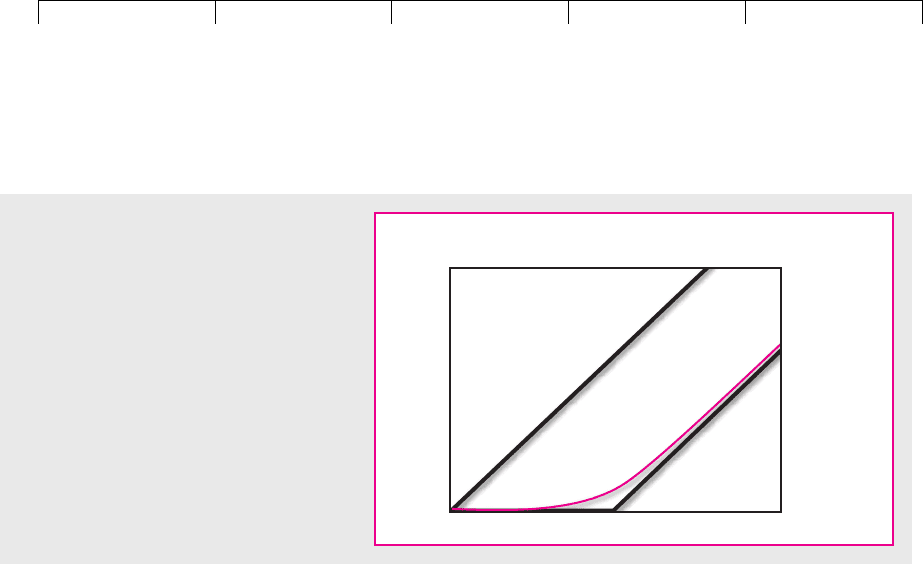
Brealey−Meyers:
Principles of Corporate
Finance, Seventh Edition
VI. Options 21. Valuing Options
© The McGraw−Hill
Companies, 2003
Step 2 Find and . is the probability that a normally distributed
variable will be less than standard deviations above the mean. If is large,
is close to 1.0 (i.e., you can be almost certain that the variable will be less than
standard deviations above the mean). If is zero, is .5 (i.e., there is a 50 per-
cent chance that a normally distributed variable will be below the average).
The simplest way to find is to use the Excel function NORMSDIST. For ex-
ample, if you enter NORMSDIST(.2120) into an Excel spreadsheet, you will see that
there is a .5840 probability that a normally distributed variable will be less than
.2120 standard deviations above the mean. Alternatively, you can use a set of nor-
mal probability tables such as those in Appendix Table 6, in which case you need
to interpolate between the cumulative probabilities for and .
Again you can use the Excel function to find . If you enter NORMS-
DIST( ) into an Excel spreadsheet, you should get the answer .4698. In other
words, there is a probability of .4698 that a normally distributed variable will be
less than .0757 standard deviations below the mean. Alternatively, if you use Ap-
pendix Table 6, you need to look up the value for and subtract it from 1.0:
Step 3 Plug these numbers into the Black–Scholes formula. You can now calcu-
late the value of the AOL call:
Some More Practice Suppose you repeated the calculations for the AOL call for
a wide range of stock prices. The result is shown in Figure 21.5. You can see that
the option values lie along an upward-sloping curve that starts its travels in the
bottom left-hand corner of the diagram. As the stock price increases, the option
⫽3.5840 ⫻ 554 ⫺ 3.4698 ⫻ 55/11.042
.5
4 ⫽ $6.78
⫽3N1d
1
2 ⫻ P4 ⫺ 3N1d
2
2 ⫻ PV1EX24
3Delta ⫻ price4 ⫺ 3bank loan4
⫽ 1 ⫺ .5302 ⫽ .4698
N1d
2
2 ⫽ N1⫺.07572 ⫽ 1 ⫺ N1⫹.07572
⫹.0757
⫺.0757
N1d
2
2
d
1
⫽ .22d
1
⫽ .21
N1d
1
2
N1d
1
2d
1
d
1
N1d
1
2d
1
d
1
N1d
1
2N1d
2
2N1d
1
2
604 PART VI Options
Values of
AOL call option
Exercise price = $55
Share price
FIGURE 21.5
The curved line shows how the value of the
AOL call option changs as the price of AOL
stock changes.
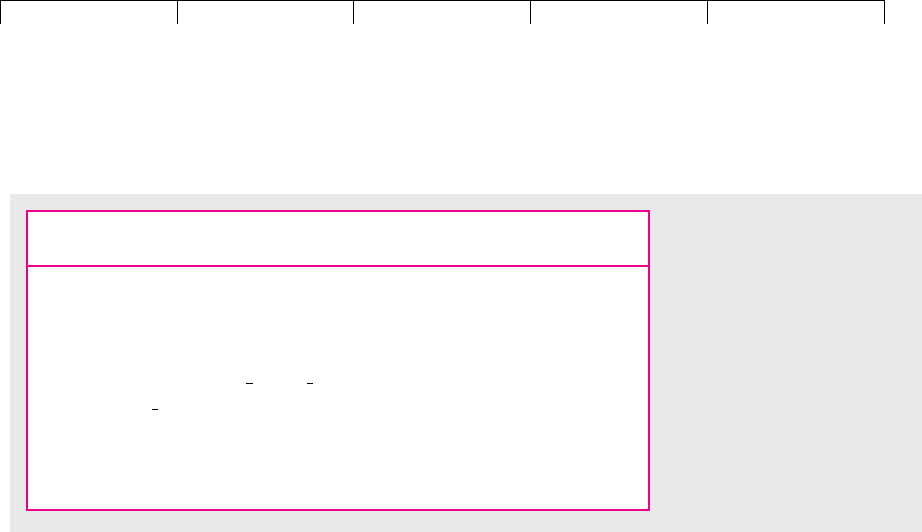
Brealey−Meyers:
Principles of Corporate
Finance, Seventh Edition
VI. Options 21. Valuing Options
© The McGraw−Hill
Companies, 2003
value rises and gradually becomes parallel to the lower bound for the option value.
This is exactly the shape we deduced in Chapter 20 (see Figure 20.10).
The height of this curve of course depends on risk and time to maturity. For ex-
ample, if the risk of AOL stock had suddenly decreased, the curve shown in Figure
21.5 would drop at every possible stock price.
Speaking of differences in risk, we can now use the Black–Scholes formula to
value the executive stock option packages you were offered in Section 20.3 (see
Table 20.3). Table 21.2 calculates the value of the package from safe-and-stodgy Es-
tablishment Industries at $526,000. The package from risky-and-glamorous Digital
Organics is worth $740,000. Congratulations.
The Black–Scholes Formula and the Binomial Method
Look back at Table 21.1 where we used the binomial method to calculate the value
of the AOL call. Notice that, as the number of intervals is increased, the values that
you obtain from the binomial method begin to snuggle up to the Black–Scholes
value of $6.78.
The Black–Scholes formula recognizes a continuum of possible outcomes. This
is usually more realistic than the limited number of outcomes assumed in the bi-
nomial method. The formula is also more accurate and quicker to use than the bi-
nomial method. So why use the binomial method at all? The answer is that there
are circumstances in which you cannot use the Black–Scholes formula but the bi-
nomial method will still give you a good measure of the option’s value. We will
look at several such cases in the next section.
Using the Black–Scholes Formula to Estimate Variability
So far we have used our option pricing model to calculate the value of an option
given the standard deviation of the asset’s returns. Sometimes it is useful to turn
the problem around and ask what the option price is telling us about the asset’s
variability. For example, the Chicago Board Options Exchange trades options on
several market indexes. As we write this, the Standard and Poor’s 100-share in-
dex is 575, while a six-month at-the-money call option on the index is priced at
42. If the Black–Scholes formula is correct, then an option value of 42 makes sense
CHAPTER 21
Valuing Options 605
Establishment Digital
Industries Organics
Stock price (P) $22 $22
Exercise price (EX) $25 $25
Interest rate (r
f
) .04 .04
Maturity in years (t)55
Standard deviation .24 .36
.3955 .4873
⫺.1411 ⫺.3177
$5.26 $7.40
Value of 100,000 options $526,000 $740,000
3N1 d
1
2 ⫻ P4 ⫺ 3N1d
2
2 ⫻ PV1EX24
Value of call ⫽
d
2
⫽ d
1
⫺ 2t
d
1
⫽ log 3P/PV1EX24/2t ⫹ 2t/2
12
TABLE 21.2
Using the Black–Scholes
formula to value the executive
stock options for Establishment
Industries and Digital Organics
(see Table 20.3).
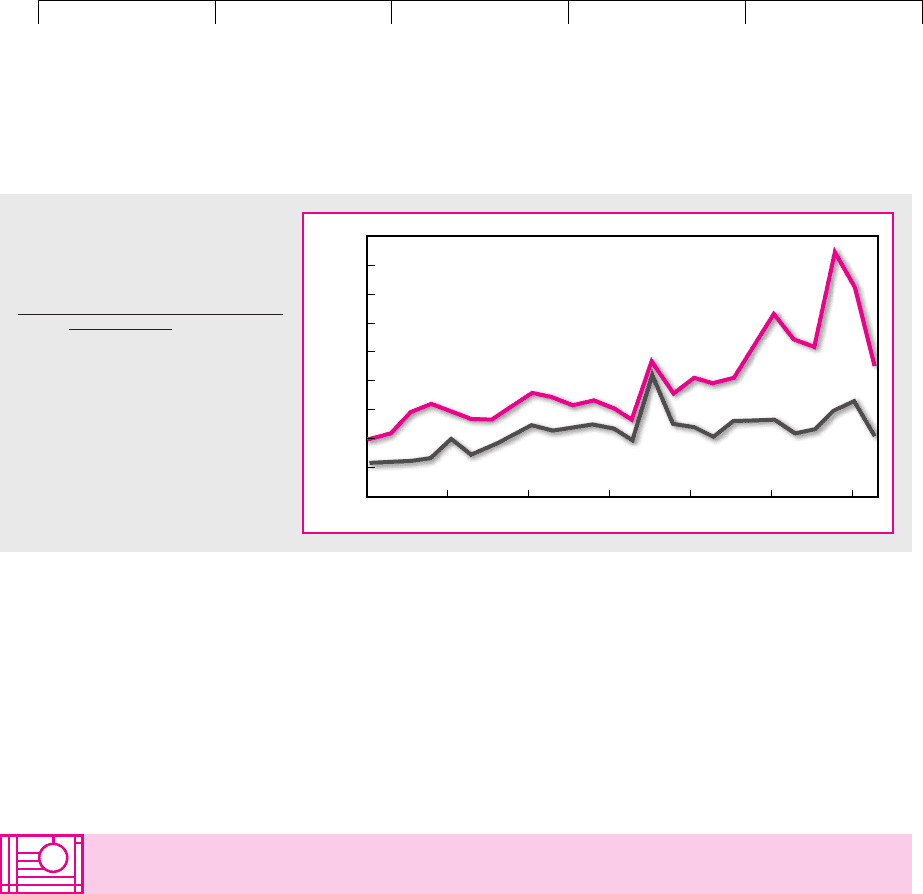
Brealey−Meyers:
Principles of Corporate
Finance, Seventh Edition
VI. Options 21. Valuing Options
© The McGraw−Hill
Companies, 2003
only if investors believe that the standard deviation of index returns is about 23
percent a year. You may be interested to compare this number with Figure 21.6,
which shows the stock market volatility that was implied by the price of index
options in earlier years. Notice the sharp increase in investor uncertainty about
the value of Nasdaq stocks during the crash of the dot.com stocks in late 2000.
This uncertainty showed up in the high price that investors were prepared to pay
for options.
606 PART VI
Options
Nasdaq
S&P 100
90
80
70
60
50
40
30
20
10
0
Mar. 95
Implied volatility %
Mar. 96 Mar. 97 Mar. 98 Mar. 99 Mar. 00 Mar. 01
FIGURE 21.6
Standard deviations of market
returns implied by prices of options
on stock indexes.
Source: www.cboe.com.
21.4 OPTION VALUES AT A GLANCE
So far our discussion of option values has assumed that investors hold the option
until maturity. That is certainly the case with European options that cannot be ex-
ercised before maturity but may not be the case with American options that can be
exercised at any time. Also, when we valued the AOL call, we could ignore divi-
dends, because AOL did not pay any. Can the same valuation methods be extended
to American options and to stocks that pay dividends? You may find it useful to
have the following summary of how different combinations of features affect op-
tion value.
American Calls—No Dividends Unlike European options, American options can
be exercised anytime. However, we know that in the absence of dividends the
value of a call option increases with time to maturity. So, if you exercised an Amer-
ican call option early, you would needlessly reduce its value. Since an American
call should not be exercised before maturity, its value is the same as that of a Euro-
pean call, and the Black–Scholes model applies to both options.
European Puts—No Dividends If we wish to value a European put, we can use
the put–call parity formula from Chapter 20:
Value of put ⫽ value of call ⫺ value of stock ⫹ PV1exercise price2

Brealey−Meyers:
Principles of Corporate
Finance, Seventh Edition
VI. Options 21. Valuing Options
© The McGraw−Hill
Companies, 2003
CHAPTER 21 Valuing Options 607
American Puts—No Dividends It can sometimes pay to exercise an American put
before maturity to reinvest the exercise price. For example, suppose that immedi-
ately after you buy an American put, the stock price falls to zero. In this case there
is no advantage to holding onto the option since it cannot become more valuable.
It is better to exercise the put and invest the exercise money. Thus an American put
is always more valuable than a European put. In our extreme example, the differ-
ence is equal to the present value of the interest that you could earn on the exercise
price. In all other cases the difference is less.
Because the Black–Scholes formula does not allow for early exercise, it cannot
be used to value an American put exactly. But you can use the step-by-step bino-
mial method as long as you check at each point whether the option is worth more
dead than alive and then use the higher of the two values.
European Calls on Dividend-Paying Stocks Part of the share value comprises the
present value of dividends. The option holder is not entitled to dividends. There-
fore, when using the Black–Scholes model to value a European call on a dividend-
paying stock, you should reduce the price of the stock by the present value of the
dividends paid before the option’s maturity.
Dividends don’t always come with a big label attached, so look out for instances
where the asset holder gets a benefit and the option holder does not. For example,
when you buy foreign currency, you can invest it to earn interest; but if you own
an option to buy foreign currency, you miss out on this income. Therefore, when
valuing an option to buy foreign currency, you need to deduct the present value of
this foreign interest from the current price of the currency.
13
American Calls on Dividend-Paying Stocks We have seen that when the stock
does not pay dividends, an American call option is always worth more alive than
dead. By holding onto the option, you not only keep your option open but also
earn interest on the exercise money. Even when there are dividends, you should
never exercise early if the dividend you gain is less than the interest you lose by
having to pay the exercise price early. However, if the dividend is sufficiently
large, you might want to capture it by exercising the option just before the ex-
dividend date.
The only general method for valuing an American call on a dividend-paying
stock is to use the step-by-step binomial method. In this case you must check at
each stage to see whether the option is more valuable if exercised just before the ex-
dividend date than if held for at least one more period.
Example. Here is a last chance to practice your option valuation skills by
valuing an American call on a dividend-paying stock. Figure 21.7 summarizes
the possible price movements in Consolidated Pork Bellies stock. The stock
price is currently $100, but over the next year it could either fall by 20 percent
to $80 or rise by 25 percent to $125. In either case the company will then pay its
regular dividend of $20. Immediately after payment of this dividend the stock
price will fall to , or . Over the second year the125 ⫺ 20 ⫽ $10580 ⫺ 20 ⫽ $60
13
For example, suppose that it currently costs $2 to buy £1 and that this pound can be invested to earn
interest of 5 percent. The option holder misses out on interest of . So, before using the
Black–Scholes formula to value an option to buy sterling, you must adjust the current price of sterling:
⫽ $2 ⫺ .10/1.05 ⫽ $1.905.
Adjusted price of sterling ⫽ current price ⫺ PV1interest2
.05 ⫻ $2 ⫽ $.10
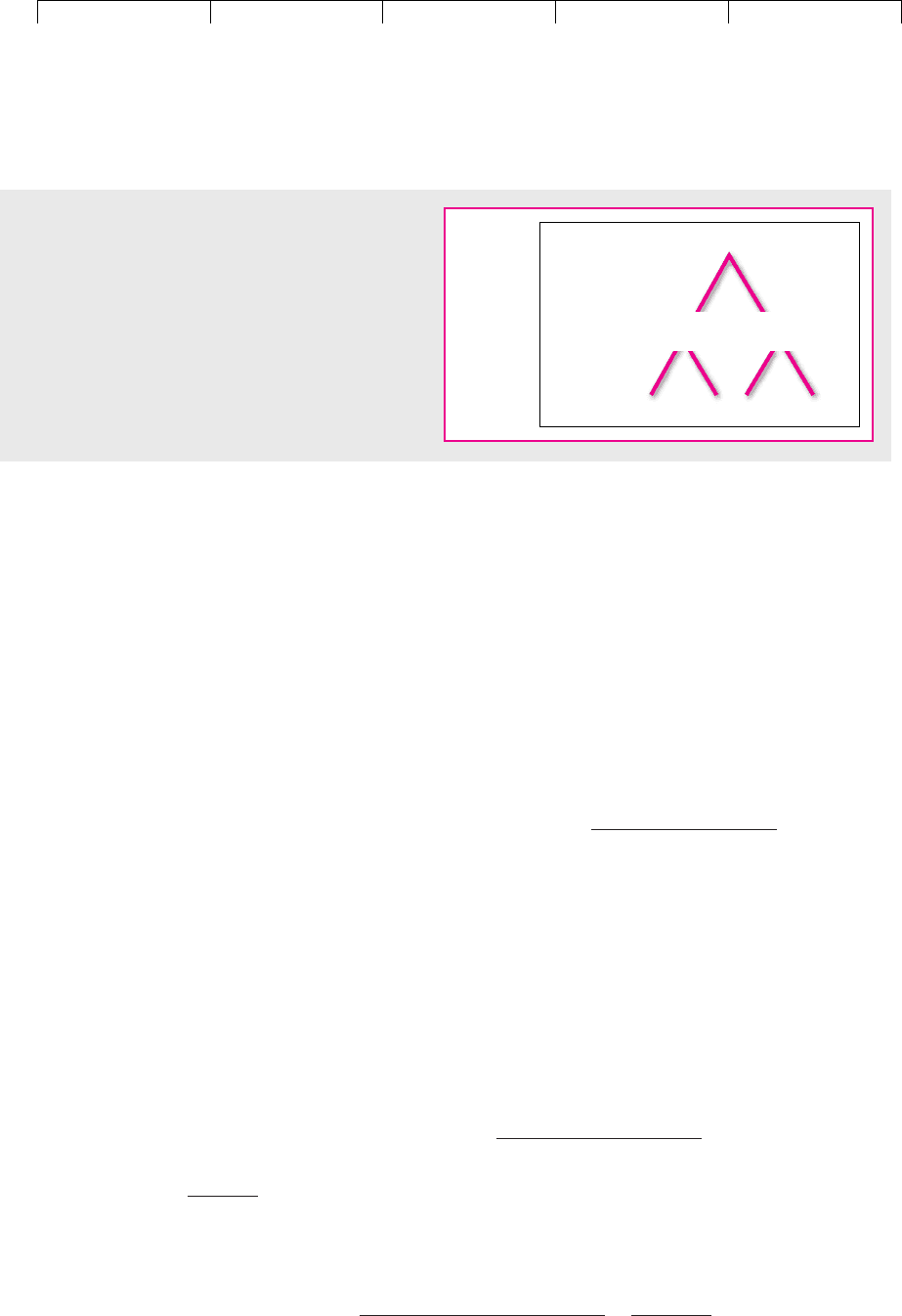
Brealey−Meyers:
Principles of Corporate
Finance, Seventh Edition
VI. Options 21. Valuing Options
© The McGraw−Hill
Companies, 2003
price will again either fall by 20 percent from the ex-dividend price or rise by
25 percent.
14
Suppose that you wish to value a two-year American call option on Consoli-
dated stock. Figure 21.8 shows the possible option values at each point, assuming
an exercise price of $70 and an interest rate of 12 percent. We won’t go through all
the calculations behind these figures, but we will focus on the option values at the
end of year 1.
Suppose that the stock price has fallen in the first year. What is the option worth
if you hold onto it for a further period? You should be used to this problem by now.
First pretend that investors are risk-neutral and calculate the probability that the
stock will rise in price. This probability turns out to be 71 percent.
15
Now calculate
the expected payoff on the option and discount at 12 percent:
Thus, if you hold onto the option, it is worth $3.18. However, if you exercise the op-
tion just before the ex-dividend date, you pay an exercise price of $70 for a stock
worth $80. This $10 value from exercising is greater than the $3.18 from holding
onto the option. Therefore in Figure 21.8 we put in an option value of $10 if the
stock price falls in year 1.
You will also want to exercise if the stock price rises in year 1. The option is worth
$42.45 if you hold onto it but $55 if you exercise. Therefore in Figure 21.8 we put in
a value of $55 if the stock price rises.
The rest of the calculation is routine. Calculate the expected option payoff in
year 1 and discount by 12 percent to give the option value today:
Option value today ⫽
1.71 ⫻ 552 ⫹ 1.29 ⫻ 102
1.12
⫽ $37.50
Option value if not exercised in year 1 ⫽
1.71 ⫻ 52 ⫹ 1.29 ⫻ 02
1.12
⫽ $3.18
608 PART VI
Options
14
Notice that the payment of a fixed dividend in year 1 results in four possible stock prices at the end
of year 2. In other words, does not equal . Don’t let that put you off. You still start
from the end and work back one step at a time to find the possible option values at each date.
15
Using the formula given in footnote 5,
p ⫽
interest rate ⫺ downside change
upside change ⫺ downside change
⫽
12 ⫺ 1⫺202
25 ⫺ 1⫺202
⫽ .71
105 ⫻ .860 ⫻ 1.25
100
Now
131.2548 75 84
Year 2
Year 1
125
105
80
60
with dividend
ex-dividend
FIGURE 21.7
Possible values of Consolidated Pork Bellies stock.
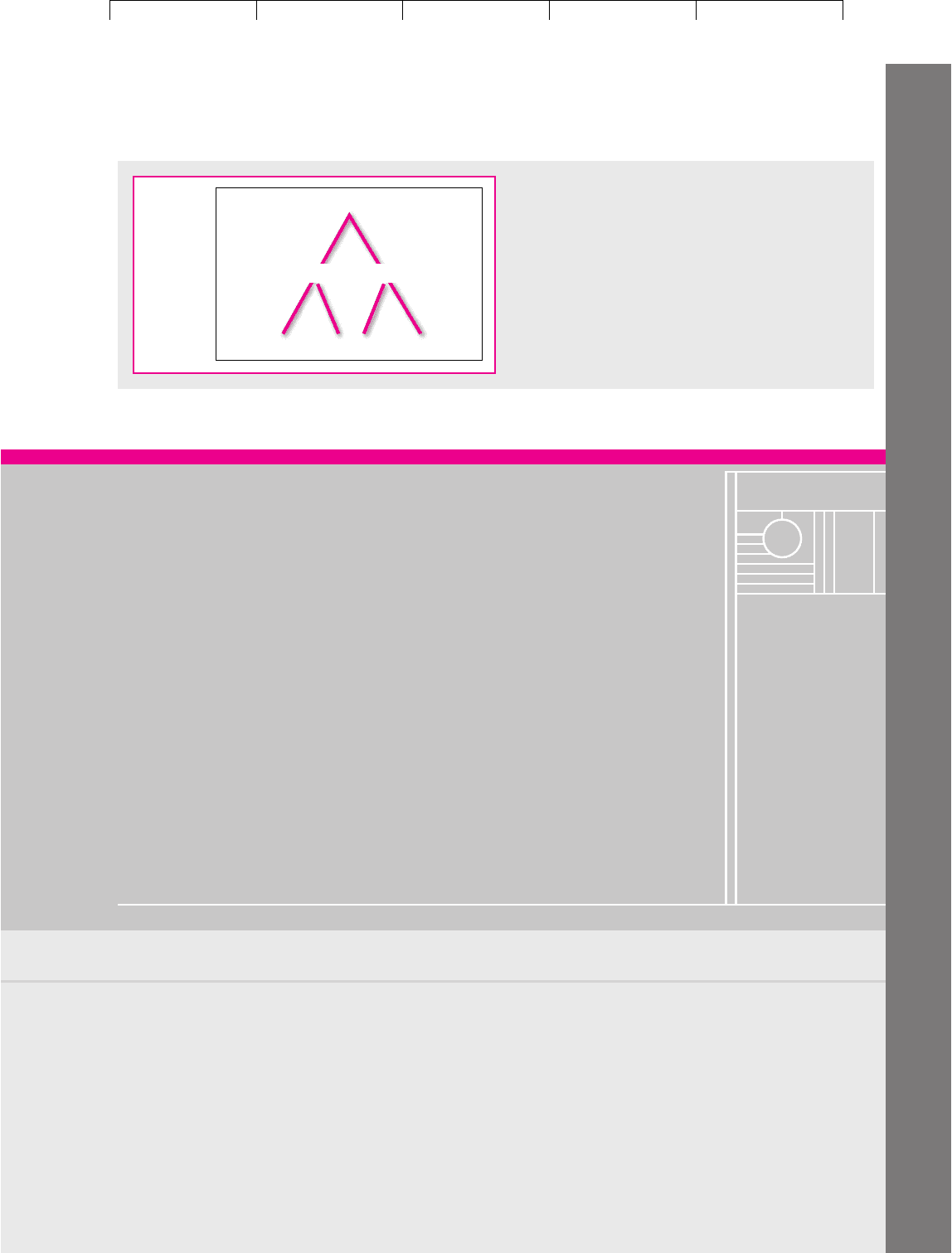
Brealey−Meyers:
Principles of Corporate
Finance, Seventh Edition
VI. Options 21. Valuing Options
© The McGraw−Hill
Companies, 2003
CHAPTER 21 Valuing Options 609
37.5
Now
61.250514
Year 2
Year 1
5510
FIGURE 21.8
Values of a two-year call option on Consolidated Pork
Bellies stock. Exercise price is $70. Although we show
option values for year 2, the option will not be alive then.
It will be exercised in year 1.
SUMMARY
In this chapter we introduced the basic principles of option valuation by consider-
ing a call option on a stock that could take on one of two possible values at the op-
tion’s maturity. We showed that it is possible to construct a package of the stock
and a loan that would provide exactly the same payoff as the option regardless of
whether the stock price rises or falls. Therefore the value of the option must be the
same as the value of this replicating portfolio.
We arrived at the same answer by pretending that investors are risk-neutral, so
that the expected return on every asset is equal to the interest rate. We calculated
the expected future value of the option in this imaginary risk-neutral world and
then discounted this figure at the interest rate to find the option’s present value.
The general binomial method adds realism by dividing the option’s life into a
number of subperiods in each of which the stock price can make one of two possi-
ble moves. Chopping the period into these shorter intervals doesn’t alter the basic
method for valuing a call option. We can still replicate the call by a package of the
stock and a loan, but the package changes at each stage.
Finally, we introduced the Black–Scholes formula. This calculates the option’s
value when the stock price is constantly changing and takes on a continuum of pos-
sible future values.
When valuing options in practical situations there are a number of features to
look out for. For example, you may need to recognize that the option value is re-
duced by the fact that the holder is not entitled to any dividends.
FURTHER
READING
The classic articles on option valuation are:
F. Black and M. Scholes: “The Pricing of Options and Corporate Liabilities,” Journal of Polit-
ical Economy, 81:637–654 (May–June 1973).
R. C. Merton: “Theory of Rational Option Pricing,” Bell Journal of Economics and Management
Science, 4:141–183 (Spring 1973).
The texts listed under “Further Reading” in Chapter 20 can be referred to for discussion of option-
valuation models and the practical complications of applying them.
Visit us at www.mhhe.com/bm7e

Brealey−Meyers:
Principles of Corporate
Finance, Seventh Edition
VI. Options 21. Valuing Options
© The McGraw−Hill
Companies, 2003
610 PART VI Options
QUIZ
1. The stock price of Deutsche Metall (DM) changes only once a month: either it goes up
by 20 percent or it falls by 16.7 percent. Its price now is a40, that is, 40 euros. The inter-
est rate is 12.7 percent per year, or about 1 percent per month.
a. What is the value of a one-month call option with an exercise price of a40?
b. What is the option delta?
c. Show how the payoffs of this call option can be replicated by buying DM’s stock
and borrowing.
d. What is the value of a two-month call option with an exercise price of a40?
e. What is the option delta of the two-month call over the first one-month period?
2. Complete the following sentence and briefly explain: “The Black–Scholes formula gives
the same answer as the binomial method when ____.”
3. a. Can the delta of a call option be greater than 1.0? Explain.
b. Can it be less than zero?
c. How does the delta of a call change if the stock price rises?
d. How does it change if the risk of the stock increases?
4. Why can’t you value options using a standard discounted-cash-flow formula?
5. Use either the replicating-portfolio method or the risk-neutral method to value the six-
month call and put options on AOL stock with an exercise price of $60 (see Table 20.1).
Assume AOL stock .
6. Imagine that AOL’s stock price will either rise by 25 percent or fall by 20 percent over
the next six months (see Section 21.1). Recalculate the value of the call option (exer-
cise ) using (a) the replicating portfolio method and (b) the risk-neutral
method. Explain intuitively why the option value falls from the value computed in
Section 21.1.
7. Over the coming year Ragwort’s stock price will halve to $50 from its current level of
$100 or it will rise to $200. The one-year interest rate is 10 percent.
a. What is the delta of a one-year call option on Ragwort stock with an exercise price
of $100?
b. Use the replicating-portfolio method to value this call.
c. In a risk-neutral world what is the probability that Ragwort stock will rise
in price?
d. Use the risk-neutral method to check your valuation of the Ragwort option.
e. If someone told you that in reality there is a 60 percent chance that Ragwort’s stock
price will rise to $200, would you change your view about the value of the option?
Explain.
8. Use the Black–Scholes formula with Appendix Table 6 to value the following options:
a. A call option written on a stock selling for $60 per share with a $60 exercise price.
The stock’s standard deviation is 6 percent per month. The option matures in three
months. The risk-free interest rate is 1 percent per month.
b. A put option written on the same stock at the same time, with the same exercise
price and expiration date.
Now for each of these options find the combination of stock and risk-free asset that
would replicate the option.
9. “An option is always riskier than the stock it is written on.” True or false? How does the
risk of an option change when the stock price changes?
10. For which of the following options might it be rational to exercise before maturity?
Explain briefly why or why not.
a. American put on a non-dividend-paying stock.
b. American call—the dividend payment is 50 pesos per annum, the exercise price is
1,000 pesos, and the interest rate is 10 percent.
price ⫽ $55
price ⫽ $55
Visit us at www.mhhe.com/bm7e

Brealey−Meyers:
Principles of Corporate
Finance, Seventh Edition
VI. Options 21. Valuing Options
© The McGraw−Hill
Companies, 2003
CHAPTER 21 Valuing Options 611
c. American call—the interest rate is 10 percent, and the dividend payment is 5
percent of future stock price. Hint: The dividend depends on the stock price, which
could either rise or fall.
PRACTICE
QUESTIONS
1. Johnny Jones’s high school derivatives homework asks for a binomial valuation of a 12-
month call option on the common stock of the Overland Railroad. The stock is now sell-
ing for $45 per share and has a standard deviation of 24 percent. Johnny first constructs
a binomial tree like Figure 21.2, in which stock price moves up or down every six
months. Then he constructs a more realistic tree, assuming that the stock price moves
up or down once every three months, or four times per year.
a. Construct these two binomial trees.
b. How would these trees change if Overland’s standard deviation were 30 percent?
Hint: Make sure to specify the right up and down percentage changes.
2. Suppose a stock price can go up by 15 percent or down by 13 percent over the next year.
You own a one-year put on the stock. The interest rate is 10 percent, and the current
stock price is $60.
a. What exercise price leaves you indifferent between holding the put or exercising
it now?
b. How does this break-even exercise price change if the interest rate is increased?
3. Look back at Table 20.2. Now construct a similar table for put options. In each case con-
struct a simple example to illustrate your point.
4. The price of Matterhorn Mining stock is 100 Swiss francs (SFr). During each of the next
two six-month periods the price may either rise by 25 percent or fall by 20 percent
(equivalent to a standard deviation of 31.5 percent a year). At month 6 the company will
pay a dividend of SFr20. The interest rate is 10 percent per six-month period. What is
the value of a one-year American call option with an exercise price of SFr80? Now re-
calculate the option value, assuming that the dividend is equal to 20 percent of the with-
dividend stock price.
5. Buffelhead’s stock price is $220 and could halve or double in each six-month period
(equivalent to a standard deviation of 98 percent). A one-year call option on Buffelhead
has an exercise price of $165. The interest rate is 21 percent a year.
a. What is the value of the Buffelhead call?
b. Now calculate the option delta for the second six months if (i) the stock price rises
to $440 and (ii) the stock price falls to $110.
c. How does the call option delta vary with the level of the stock price? Explain
intuitively why.
d. Suppose that in month 6 the Buffelhead stock price is $110. How at that point could
you replicate an investment in the stock by a combination of call options and risk-
free lending? Show that your strategy does indeed produce the same returns as
those from an investment in the stock.
6. Suppose that you own an American put option on Buffelhead stock (see question 5)
with an exercise price of $220.
a. Would you ever want to exercise the put early?
b. Calculate the value of the put.
c. Now compare the value with that of an equivalent European put option.
7. Recalculate the value of the Buffelhead call option (see question 5), assuming that the
option is American and that at the end of the first six months the company pays a
dividend of $25. (Thus the price at the end of the year is either double or half the
ex-dividend price in month 6.) How would your answer change if the option were
European?
Visit us at www.mhhe.com/bm7e
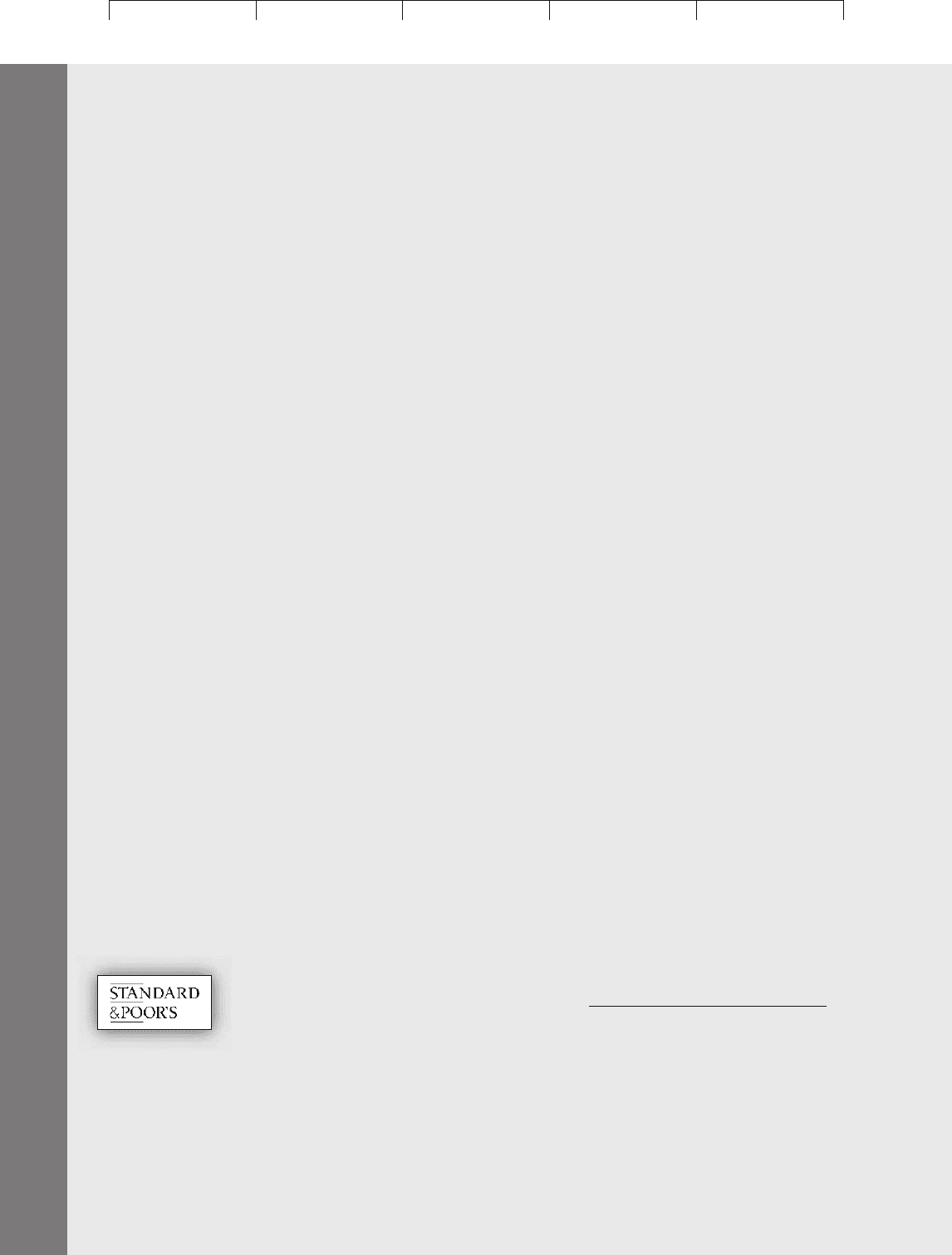
Brealey−Meyers:
Principles of Corporate
Finance, Seventh Edition
VI. Options 21. Valuing Options
© The McGraw−Hill
Companies, 2003
612 PART VI Options
Visit us at www.mhhe.com/bm7e
8. Suppose that you have an option which allows you to sell Buffelhead stock (see ques-
tion 5) in month 6 for $165 or to buy it in month 12 for $165. What is the value of this
unusual option?
9. The current price of the stock of Mont Tremblant Air is C$100. During each six-month
period it will either rise by 11.1 percent or fall by 10 percent (equivalent to an annual
standard deviation of 14.9 percent). The interest rate is 5 percent per six-month period.
a. Calculate the value of a one-year European put option on Mont Tremblant’s stock
with an exercise price of C$102.
b. Recalculate the value of the Mont Tremblant put option, assuming that it is an
American option.
10. The current price of United Carbon (UC) stock is $200. The standard deviation is 22.3
percent a year, and the interest rate is 21 percent a year. A one-year call option on UC
has an exercise price of $180.
a. Use the Black–Scholes model to value the call option on UC.
b. Use the formula given in Section 21.2 to calculate the up and down moves that you
would use if you valued the UC option with the one-period binomial method.
Now value the option by using that method.
c. Recalculate the up and down moves and revalue the option by using the two-
period binomial method.
d. Use your answer to part (c) to calculate the option delta (i) today; (ii) next period
if the stock price rises; and (iii) next period if the stock price falls. Show at each
point how you would replicate a call option with a levered investment in the
company’s stock.
11. Suppose you construct an option hedge by buying a levered position in delta shares of
stock and selling one call option. As the share price changes, the option delta changes,
and you will need to adjust your hedge. You can minimize the cost of adjustments if
changes in the stock price have only a small effect on the option delta. Construct an ex-
ample to show whether the option delta is likely to vary more if you hedge with an in-
the-money option, an at-the-money option, or an out-of-the-money option.
12. Other things equal, which of these American options are you most likely to want to ex-
ercise early?
a. A put option on a stock with a large dividend or a call on the same stock.
b. A put option on a stock that is selling below exercise price or a call on the same stock.
c. A put option when the interest rate is high or the same put option when the
interest rate is low.
Illustrate your answer with examples.
13. Is it better to exercise a call option on the with-dividend date or on the ex-dividend
date? How about a put option? Explain.
14. You can buy each of the following items of information about an American call option
for $10 apiece: PV (exercise price); exercise price; standard root of
time to maturity; interest rate (per annum); time to maturity; value of European put; ex-
pected return on stock.
How much would you need to spend to value the option? Explain.
15. Look back to the companies listed in Table 7.3. Most of these companies are covered in
the Standard & Poor’s Market Insight website (www
.mhhe.com/edumarketinsight),
and most will have traded options. Pick at least three companies. For each company,
download “Monthly Adjusted Prices” as an Excel spreadsheet. Calculate each com-
pany’s standard deviation from the monthly returns given on the spreadsheet. The Ex-
cel function is STDEV. Convert the standard deviations from monthly to annual units
by multiplying by the square root of 12.
a. Use the Black–Scholes formula to value 3, 6, and 9 month call options on each
stock. Assume the exercise price equals the current stock price, and use a current,
risk-free, annual interest rate.
deviation ⫻ square
